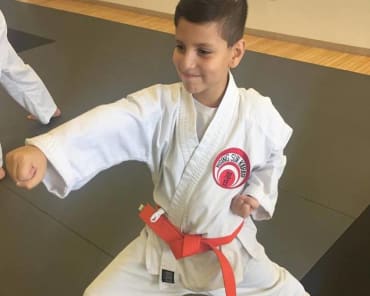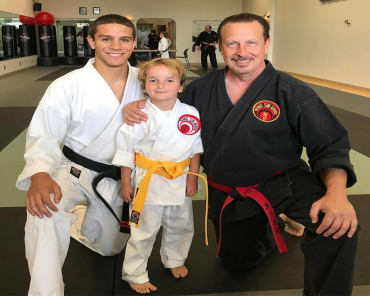Martial Arts Training Can Help Autism
New work reveals that traditional martial arts practice helps communication.
Posted Oct 29, 2016
Training in traditional martial arts requires physical and mental focus. As contrasted with martial arts that that focus exclusively on competition and fighting, traditional here means those practices emphasizing overall skill and character development with movement patterning. Such training is essentially a holistic synergy of mind-body coordination. Habitual practice in martial arts, particularly when structured patterns of attack and defence are repeated, can serve as an excellent tool for physical and mental training.
For those with autism spectrum disorder (ASD), there can be significant sensorimotor issues such as compulsive movement, vocalization, and stereotyped hand and body movements. Major communication issues include impairments in speech development and language. While occupational and physical therapy regimens can be very useful in assisting many with ASD, additional physical activities may be helpful as well.
Emily Bremer and her colleagues at McMaster University and the University of Ontario Institute of Technology in Canada carefully reviewed the available literature on exercise interventions in boys and girls on with ASD from infant to age 16. Their systematic review published in the journal Autism, shows that horseback riding, jogging, swimming, yoga/dance, and martial arts can all help reduce stereotypic behaviours, improve social and emotional function, and improve cognition and attention. While there needs to be much more study of these issues, Bremer and colleagues particularly highlight horseback riding and martial arts as activities with strong evidence to produce the greatest results.
A few years ago, Fatimah Bahrami and her colleagues at the University of Istafahan in Iran showed that training in "kata"--organized and continuous patterns of attack and defence--could reduce stereotypic movements in youth with ASD. In a follow-up study, this same group examined the effect of training in the karate kata "Heian Shodan" (also known as Pinan Shodan or Nidan in some systems) on communication abilities.
Thirteen boys and 2 girls aged 5-16 years trained 4 times per week for 14 weeks yielding a total of 56 sessions and 20 hours of actual karate kata training (the training each week also included warm up, stretching, cool down, etc). Parents of the children were also present during training to provide assistance with behaviour as needed. All of the participants completed all 56 sessions, which is actually very impressive since drop out is usually an issue for any intervention.
The main measure used to assess communication ability--the Gilliam Autism Rating Scale (2nd Edition; GARS-2)--showed that the karate trained group of youth improved significantly. These improvements were maintained at the one month follow up. The control group, in contrast, remained at the same GARS-2 scale before, after, and at follow up.
Many parents of children with ASD are particularly strained trying to navigate whatever occupational and physical therapies may or may not be offered in their communities. Which is why these recent concepts using martial arts training--and focused mostly on traditional karate--are so compelling. Many communities have qualified martial arts teachers who may be able to offer specialized training in this way.
Exactly what neurological mechanism these physical activities may be altering is not really known at this time. I offered some thoughts on this in a blog post from a while ago. It is tempting to speculate that it might involve effects on neurotrophins--the chemicals that help sustain and enhance the function of our neurons--such as brain derived neurotrophic factor (BDNF). In fact Bahrami and her colleagues suggest this mechanism in their paper, but their isn't any evidence to directly support this currently.
Regardless of the neurobiological mechanism, it is becoming increasingly clear that structured traditional martial arts training can be a useful form of movement training for those on the autism spectrum. The good news here is that there is accumulating evidence that martial arts training focused on physical and mental integration can be effective. This, along with consideration of other activities that emphasize repetitive practice using the whole body such as horseback riding, jogging, swimming, yoga, and dance, open up many other avenues through which those with ASD and their families can strive to reach their ultimate potential.
(c) E. Paul Zehr (2016)








